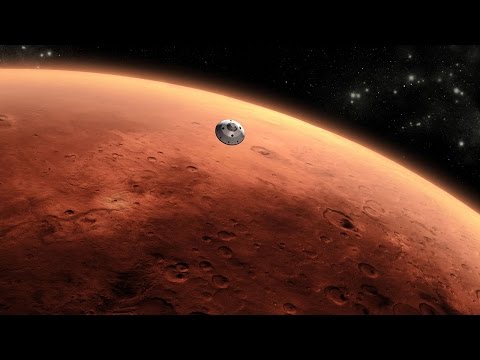SpaceX Mars Colonization!! Can we REALLY Build Habitats on Mars Exploration Zones?? -In details
Hello friends, Welcome back to another episode by Engineering Today and hope you’re all having a great time. As Starship prepares for IFT 2, we have taken the opportunity to explore the future and delve into the pivotal role this world’s most powerful rocket will play in the advancement of humanity’s space endeavors like Mars colonization. And now, we have an exciting and exclusive update to share with you. We know that SpaceX envisions a future where human colonization on Mars becomes a reality. Elon Musk has set his sights on Mars colonization, and he’s not afraid to dream big. While Musk’s artist illustrations of “Mars Base Alpha” depict a complex network of buildings and infrastructure, SpaceX’s initial plans for the Red Planet are more focused and practical. Before sending any humans to Mars, SpaceX intends to land at least two uncrewed cargo ships on the planet’s surface. These missions will play a crucial role in establishing the necessary infrastructure for future human exploration. The cargo Starships will transport vital supplies such as life-support systems and power generators, ensuring that the first astronauts on Mars have the resources they need to set up a sustainable camp. But the cargo missions won’t stop at delivering supplies. They will also serve the important task of confirming the presence of natural resources on Mars. SpaceX is particularly interested in identifying water ice on the planet’s surface and extracting carbon dioxide from its atmosphere. These resources will be used to produce fuel for future missions to and from Mars. By utilizing water and carbon dioxide to create liquid methane and liquid oxygen, SpaceX aims to establish a propellant production plant on Mars, enabling the rockets, called Starships, to refuel and make the journey back to Earth. SpaceX plans to launch two crewed missions in conjunction with two additional cargo-only flights to kickstart the setup of the propellant production plant. The conversion of water and carbon dioxide into usable fuel will be a pivotal step in achieving long-term sustainability on Mars. This process will provide the means for Starships to refuel, allowing for the return trip back to Earth, and ultimately paving the way for more frequent and efficient travel between the two planets. But what about the Colonization part? Will humans be able to establish a permanent residence on Mars? Well, Let me explain. One of the key challenges for human life on Mars is the planet’s thin and inhospitable atmosphere. Mars has a predominantly carbon dioxide atmosphere with very little oxygen and nitrogen compared to Earth. This lack of suitable gases makes it impossible for humans to breathe and for plants to survive without a substantial supply of air. The atmospheric pressure on Mars is also significantly lower than on Earth, which can lead to dangerous consequences such as body fluids boiling without proper pressurization. Moreover, Mars experiences extremely cold temperatures due to its thin atmosphere, with temperatures plummeting as low as -285 degrees Fahrenheit. Studies have shown that Mars lacks the required elements to create a sustainable atmosphere for human life, necessitating the need for astronauts to bring their own life-supporting systems. Another major obstacle to human exploration on Mars is the high levels of radiation in space. Earth’s strong magnetic field and thick atmosphere provide protection against harmful radiation from the sun and other celestial sources. But the big names in the Space tech industry like Mr. Elon Musk are very determined in their journey towards Mars and they will adapt and find new ways to ensure their survival in the face of the unique conditions on the Red Planet. And, In this ambitious pursuit, one potential solution that has garnered considerable attention is the use of inflatable habitats. While other options such as underground structures or 3D-printed rock-based structures have been considered, living in a balloon-like habitat presents some unique advantages. Inflatable habitats have actually been in development for the past three decades and are now gaining prominence in human space flight plans. The idea of 3D printing on Mars has also been a popular concept, but it comes with its own set of challenges. These include the difficulty of landing robots on Mars, generating sufficient power, and the uncertainty surrounding the composition of the Martian regolith. On the other hand, inflatable habitats offer several benefits that make them an appealing choice. For starters, they can be prefabricated on Earth, making the construction process more manageable. Once completed, they can be easily transported to Mars, ready for deployment. Inflatable habitats also have the remarkable ability to self-inflate, simplifying the process of setting up a living space for humans. Additionally, these habitats can deploy solar panels for power generation, further enhancing their self-sufficiency. When it comes to inflatable space habitats, Bigelow Aerospace has been at the forefront of innovation. They successfully demonstrated the Bigelow Expandable Activity Module (BEAM) on the International Space Station (ISS), proving the feasibility of such structures. Building on this success, Sierra Nevada Corporation’s Sierra Space is continuing to develop inflatable habitats with its life habitat module. This module is designed for integration into the future orbital Reef space station, showcasing the commitment to advancing this technology. One of the most intriguing aspects of inflatable habitats is their versatility. They can function as standalone space stations or be linked together to form larger structures. This flexibility allows for modular expansion, accommodating the evolving needs of a growing Martian colony. The outer shell of these habitats is made of multiple layers of a remarkably tough material called Vectran, which exhibits strength surpassing that of steel when pressurized. Rigorous testing is conducted to ensure their strength and durability, including assessments for overpressure and ballistic impacts. Moreover, the design of inflatable habitats offers an additional safety feature. In the event of a puncture in the shell, explosive decompression would not occur, and any leaks could be addressed gradually. This further enhances the long-term viability and resilience of these habitats in the challenging Martian environment. Another critical consideration for Martian colonization is radiation shielding. Inflatable habitats provide effective protection against radiation, utilizing materials such as woven polypropylene matrix or hydrogen-rich foams. These shielding solutions are designed to safeguard the health and well-being of the inhabitants, mitigating the risks associated with prolonged exposure to cosmic radiation. Additionally, inflatable habitats can be tailored to accommodate different gravitational conditions. They can be designed for zero gravity, which is the natural state of space, or be equipped with the capability to provide artificial gravity. By rotating the habitat, the centrifugal force generated can simulate the effects of gravity, potentially offering numerous health benefits to the residents. The life module, when integrated with ground-based infrastructure on Mars, serves as a vital waypoint between Earth and the Red Planet. This connection allows for efficient transportation of supplies, resources, and personnel, fostering the establishment of a robust interplanetary infrastructure. Looking ahead, Sierra Space is exploring the possibilities of even larger inflatable modules, envisioning the use of future rockets like SpaceX’s Starship. By leveraging the capabilities of these advanced rockets, they aim to double the working space and create jumbo-sized habitats with over 2,000 cubic meters in volume. This expansion paves the way for a more extensive and comfortable living environment, better accommodating the needs of long-term human presence on Mars. The combination of ground-based and orbital inflatable habitats offers a compelling vision for the future of Martian colonization. With their durability, self-sufficiency, radiation shielding, and adaptability to different gravitational conditions, these habitats provide the foundation for a safe and comfortable infrastructure on Mars. It is within this infrastructure that humanity can forge a new era of exploration, pushing the boundaries of our understanding and venturing ever further into the cosmos. For a clearer view, let’s have a sneak peek into the future. To kickstart the colonization effort, semi-autonomous robots take center stage. These remarkable machines embark on their mission by excavating a crater on Mars, where the future colony will take shape. It’s a crucial first step, laying the groundwork for what’s to come. Next, inflatable habitat pods are loaded onto rockets and blasted off to Mars. With the assistance of parachutes and airbags, these pods make a controlled descent onto the dusty surface of the Red Planet. It’s a delicate ballet in the sky, carefully executed to ensure the safe arrival of these essential components. Once the pods have landed, they quickly inflate and connect to each other using airlocks. The huddled habitat modules begin to take shape, forming the foundation of the future colony. It’s a remarkable sight, as these structures emerge from the barren Martian landscape, providing a glimmer of hope for future inhabitants. But how does one build a protective exterior shell for these habitats? Here comes the small robots, tirelessly working to fuse regolith—the loose rocks and soil found on Mars—into concrete. This innovative use of materials acts as the building material for the habitat’s shell. It’s a testament to human resourcefulness, harnessing the resources available on Mars to create a safe haven for colonizers. As the operational Mars base nears completion, the exterior regolith shell acts as its protective covering. The colonizers will find shelter within these walls, shielded from the harsh conditions of the Martian environment. But they won’t be alone in their new home. Alongside the astronauts, dozens of robots and automated vehicles will call this Martian colony their own. These mechanical companions will play vital roles in supporting the colonizers and assisting with maintenance, exploration, and scientific research. It’s a partnership between humans and machines, working together to unlock the mysteries of our neighboring planet. Obviously SpaceX is laying the groundwork for a sustainable and viable presence on the Red Planet. It is a journey that will require patience, innovation, and a steadfast commitment to exploring new frontiers in the realm of space travel. It looks like very soon humanity can forge a new era of exploration, pushing the boundaries of our understanding and venturing ever further into the cosmos. And that’s all for now.













